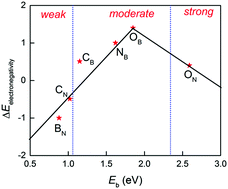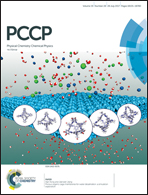How to make inert boron nitride nanosheets active for the immobilization of polysulfides for lithium–sulfur batteries: a computational study†
Abstract
The search for effective anchoring nanomaterials for the immobilization of soluble lithium polysulfide (Li2Sn) species to suppress their shuttling effect has been a key scientific issue for the large-scale practical application of lithium–sulfur (Li–S) batteries. In this work, by means of comprehensive density functional theory (DFT) computations, we systematically investigated the potential of a series of doped and defective boron nitride (BN) nanosheets as chemical immobilizers for the soluble Li2Sn species. Our results revealed that the introduction of dopants and defects can enhance the binding strength of Li2Sn species with BN nanosheets due to the strong Li⋯N or S⋯B interaction. In particular, the doped BN nanosheets that can moderately interact with Li2Sn species are shown to exhibit outstanding anchoring effects for Li–S batteries because they can keep a balance between the binding strength and integrity of Li2Sn species. Therefore, by carefully controlling the type of dopants, the inert BN nanosheet can be converted to quite a promising electrode material with high efficiency for Li–S batteries.

- This article is part of the themed collection: 2017 PCCP HOT Articles


 Please wait while we load your content...
Please wait while we load your content...